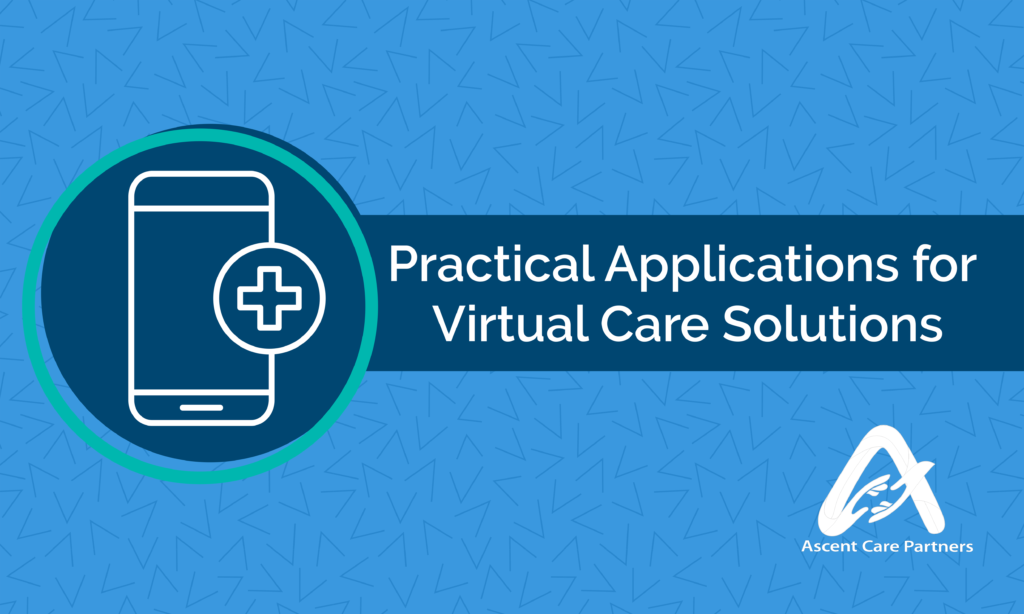The future of healthcare lies in technology, particularly the virtual delivery of care. Healthcare organizations have anticipated this but were reluctant to adopt the technology until COVID came. There was no other safer alternative to deliver care but through virtual care solutions. After the recent public health emergency, patients are preferring virtual care for its convenience and ease as well as its responsiveness and accessibility.
Virtual care solutions enable continuity of care as they can reach patients at any time and place. So instead of patients coming to see a doctor, physicians can reach and connect to patients using digital technology. In addition, caregivers and family members also need to be involved in patient care to improve health outcomes. Hence, for care to be relevant and timely, it needs to go beyond the four walls of the doctor’s clinic and span distances to reach even the remotest community.
So how has virtual care transformed care delivery? What are its practical applications since the pandemic?
Applications of Virtual Care Solutions
Virtual care has been delivered using different mechanisms and various settings. A few of its noteworthy applications are the following:
A critical component of a hybrid care model
An increasing number of healthcare organizations have adopted a hybrid care model that combines the best practices of in-person and virtual care. This new care model could address the shortage of primary care physicians, particularly in rural and low-income communities. Current market trends demonstrate a rapid adoption of the solution with nearly $15 billion in investment in the first half of 2021, twice the amount from 2019.
Forecast estimates that it would reach $250 billion in the coming years. The Center for Medicare and Medicaid Services (CMS) has approved several virtual care services and even commercial payers are offering virtual-first health plans that allow a patient to see a provider virtually before an in-person consultation.
A technology for underserved patient populations
The most ideal virtual care solution is one that resolves the lack of access to care for medically underserved populations. Virtual care enables patients to see a physician without the added cost of transportation, fuel, or missing a day at work. These timely virtual visits can help patients improve their disease management and adherence to their treatment plans.
Virtual access can also provide a personal emergency response system for elderly patients who are transitioning to at-home care from an in-hospital stay. With just a few clicks, they can reach a clinician when they need medical assistance. This could significantly reduce ER visits and hospitalizations. In addition, it facilitates aging-in-place, which is what most patients prefer and has been effective in improving patients’ quality of life.
A strategy for patient engagement and education in self-managing care
Virtual care solutions for chronic conditions do not only provide access to urgent care. Solutions like Chronic Care Management (CCM) include mechanisms to improve patient engagement, education, and next-level behavior modifications.
CCM utilizes a clinical team who can help address cultural, social, and economic barriers. They provide a crucial service in bolstering engagement, especially to populations who are reluctant to embrace new technology. The routine check-ins and monthly calls serve as the perfect venue to offer valuable insights and support to patients, who will be more cooperative when they feel that somebody is guiding them in their care journey. virtual care solution can easily address language and health literacy issues with Artificial Intelligence that can provide real-time translations.
A tool for remote monitoring
Virtual care solutions enable remote monitoring through web-based or mobile apps, wearables, and in-home devices. Remote Patient Monitoring (RPM) is one such solution introduced by Medicare to capture patient data and transmit them in near real-time to clinicians for review. This patient data provide valuable insights to clinicians as to the patient’s current health status. When abnormal trends are recorded, clinicians can alert the physician to make timely interventions and prevent an escalation.
Mechanisms to strengthen current healthcare relationships
During the pandemic, healthcare organizations have used virtual care solutions to reach even the hardest population to engage like Medicaid patients. Smartphones that send interactive voice response calls and SMS were able to drive telehealth registration up. Some used virtual technology to monitor recently discharged COVID patients and enabled clinicians to determine if in-person care is needed. This additional level of connectivity has been positively received by patients in helping them cope with the isolation.
Virtual solutions also opened another opportunity to identify Social Determinants of Health (SDoH) at the point of care. Through automated questionnaires, patients have shared more information that they were reluctant to disclose in an in-person encounter. Providers are able to know the challenges and barriers to care that patients are experiencing. In this way, they can provide the needed support and resources to ensure positive health outcomes.
A channel for better coordination among providers
Virtual care also enables providers to give better and coordinated care to patients. To illustrate, specialists can easily share their input with the primary care doctor about a particular diagnosis and treatment. They can exchange information if a virtual consult with a specialist is required. This does not mean, though, that virtual visits are replacing in-person consultations. There may just be instances that a remote consult would suffice, thereby providing huge cost-savings to patients. This is more relevant for elderly patients with chronic conditions who are having mobility issues.
Overcoming the Digital Divide
To improve virtual access, there is a need to identify regional resources to bridge the gap between the usability and value of virtual care. Though most low-income populations and even the most vulnerable have easy access to a smartphone, navigating digital health apps may pose a barrier. A recent study on these populations discovered that the use of virtual health apps is enticing, but filling in the required information proved to be cumbersome. Add to the problem the lack of broadband access, which was cited by 45% of individuals who have experienced using telehealth at least once.
There are still barriers to fully utilizing the benefits of virtual care. However, these can be addressed by specific programs to expand access, offer on-site assistance, and provide support whenever certain problems are encountered. Initiatives like what the U.S. Department of Health and Human Services (HHS) has done in early 2022 can solve the digital divide. HSS awarded $55 million to community health centers to improve access to virtual care and digital technologies. Since the pandemic, HHS has reported that community health centers’ usage of virtual care has drastically increased by 6,000%. Other entities like community service agencies, faith-based organizations, and recreational centers can be venues to further educate patients in using virtual care solutions.
The practical applications of virtual care proves that the solution can significantly improve the quality of care and reduce healthcare costs through its high-touch preventative approach. There are also environmental cost-savings involved with the reduction in carbon dioxide emissions with patients opting to receive care at home rather than drive to a doctor’s office. Solutions like CCM and RPM can also provide physicians with a new revenue stream through reimbursements.
Ascent Care Partners (ACP) is a virtual healthcare service provider providing turnkey CCM and RPM services on behalf of a practice. ACP has helped primary care physicians practices innovate their care while realizing a deserved income without increased overhead.



